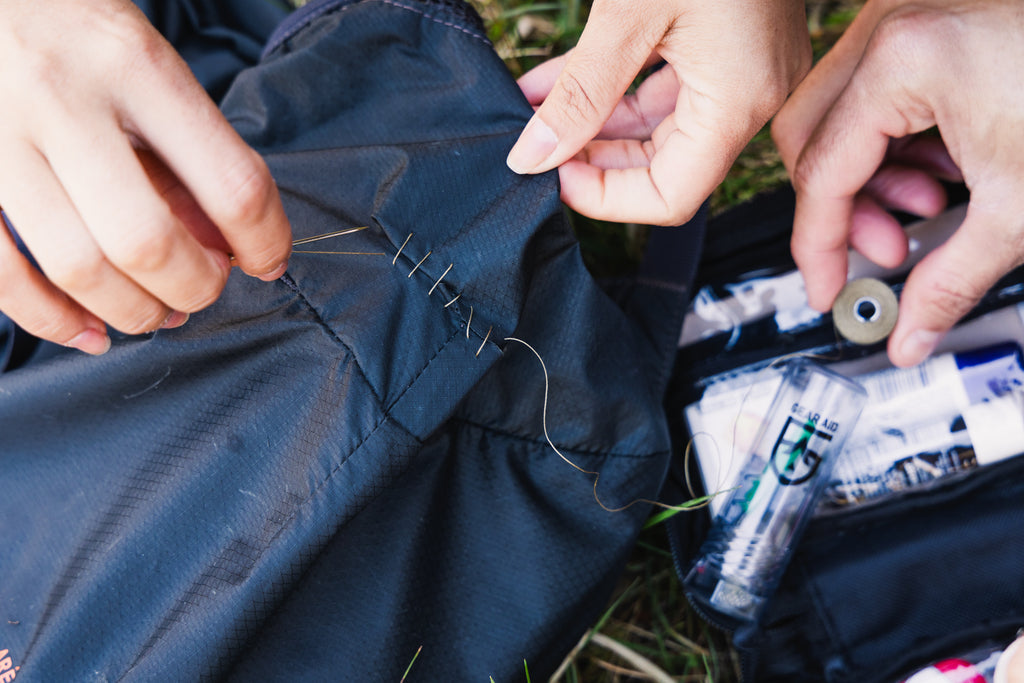Bringing Effective Altruism into the Outdoors to Enhance the Places Where We Work and Play

Your love for the outdoors can make a meaningful difference in the world. Effective altruism is a philosophy that encourages us to use our resources, whether it's time, money, or skills, in the most impactful way possible. This approach isn't necessarily about grand gestures, but about integrating mindful decisions into every aspect of our lives, including our time spent in nature. By applying the principles of effective altruism to our outdoor adventures, we're encouraged to not only enjoy, but to also protect and preserve the environments we cherish. From choosing sustainable gear to engaging in conservation efforts, this blog is a short guide around practices that are not only good for you but are also beneficial for our planet. Let’s explore how to commit to actions that genuinely preserve, protect, and enhance the outdoor spaces where we work and play.
Adopting Leave No Trace Practices
Leave No Trace is a set of principles designed to guide outdoor enthusiasts in minimizing their environmental impact while enjoying natural spaces. From packing out your trash to keeping wildlife safe, these guidelines are all about respecting nature - LNT (as it’s also known) is as much about adopting positive actions as it is about avoiding potentially harmful behaviors. Here are the 7 Leave No Trace principles.
Plan Ahead and Prepare: Ensure a safe and enjoyable experience by researching and planning properly for heading out into the elements, which helps to minimize risks and impacts. This can include checking weather reports, road conditions, and trail and park closures.
Travel and Camp on Durable Surfaces: Stick to established trails and campsites to prevent damage to undergrowth, microbiomes, and soil structures. As the LNT Organization states, “Good campsites are found, not made.”
Dispose of Waste Properly: Pack out all trash, leftover food, waste, and litter (especially plastic like six-pack rings) to protect wildlife from dangerous interactions, and the ecosystem from harmful pollutants. Plus, no one likes to see doggy bags lining the trail on a beautiful hike.
Leave What You Find: Preserve the natural and cultural heritage of outdoor spaces by not taking or altering natural objects and features. Take photos, not souvenirs or momentos.
Minimize Campfire Impacts: Use a camp stove for cooking and enjoy campfires responsibly in designated areas to prevent forest fires and habitat destruction.
Respect Wildlife: It’s important to observe animals from a distance. Do not feed them as this can make them sick, and make sure to store food properly away from wildlife. Be sure to avoid wildlife during sensitive times such as mating, nesting, and birthing seasons.
Be Considerate of Other Visitors: Maintain courtesy towards other trail users, keep dogs on leash when required, and limit noise levels to ensure everyone can enjoy their outdoor experience.

Sourcing Quality Gear and Extending the Life of It
Durability is key in the gear game. Gear that is designed with durability in mind often features reinforced stress points, double or triple-stitched seams, and weather-resistant coatings. For example, a backpack with reinforced bottom panels and heavy-duty zippers is more likely to withstand the rigors of outdoor elements than one with single stitching and flimsy closures. Outdoor clothing made from tightly woven fabrics or high-denier counts tends to be more resistant to tears and abrasion. Not only can choosing long-lasting equipment and clothing potentially save you money in the long run, but it also helps keeps waste out of landfills. And when wear and tear happens, don't toss – repair! We've got a treasure trove of tips on the GEAR AID website - from patching to sealing, we can teach you how to extend your gear's life span.

Hands-On Conservation Through Volunteering and Advocacy
Participating in hands-on projects, such as trail maintenance days or educational workshops, allows you to make a direct contribution to the preservation of our natural spaces. These activities not only positively impact the environment, but also help you connect with others who share your passion for the outdoors. If you possess specific knowledge or skills, think about either organizing your own event or offering your services to local trail organizations. This could involve using your graphic design talents to create posters for an event, leading workshops on native plant species to raise ecological awareness, or offering web development expertise to enhance an organization's ability to share resources and reach more folks. By either leading or supporting these initiatives, you play a crucial role in educating and engaging the community in conservation efforts.

Direct Impact Through Targeted Donations
If you find yourself in a position to contribute financially, supporting conservation efforts through donations to various environmental organizations can be a powerful way to help make a positive impact. However, it's essential to ensure that your donations are directed toward causes that align with your values and have clear, measurable goals to support the outdoors.
But how do you find and vet these organizations? Here is a list of criteria to consider.
Research: Check the organization’s website to understand their mission, objectives, and how they measure success.
Transparency: Choose organizations that prioritize transparency by regularly reporting on their activities, financials, and impact and have engagement with their community.
Metrics: Evaluate organizations based on clear metrics and annual reports - for example, this could be acres of land protected, species saved, or carbon emissions reduced.
Track Record: Consider the organization's past achievements and successful conservation projects to gauge their effectiveness and their communication with their donors.
Engagement: Seek organizations offering volunteer opportunities, educational programs, or advocacy initiatives for direct involvement beyond financial support.
To learn more about the local organizations GEAR AID sponsors and supports, please visit our About Page.

Here at GEAR AID, we believe that all of our individual actions add up – especially when it comes to preserving our environment. From reducing waste to supporting community initiatives, there are countless ways to make a difference. These actions not only contribute to a healthier planet but also set an example for others to follow and for future generations. Whether it’s volunteering for a trail cleanup, joining a conservation workshop, or making a targeted donation, your engagement makes a difference. The next time you lace up your boots, grab your gear, and head out, remember: your actions in the outdoors have the potential to create positive, impactful change for our green spaces, and the people who work and play outside.
